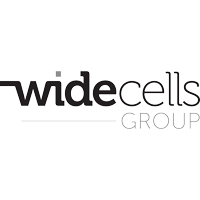In response to the use of embryonic stem cells to restore vision in two patients with macular degeneration, WideCells Group CSO Professor Peter Hollands provides insight into the history – and his personal experience of — this controversial branch of regenerative medicine:
Human embryonic stem cells
A recent report on the use of human embryonic stem cells to treat a damaged retina and restore vision is very encouraging.
Two patients, a man in his 80s and a woman in her 60s, received embryonic stem cell grafts to their eyes to treat age-related macular degeneration. The result has been the restoration of normal vision in these patients with no side effects. They can now see well enough to read. Further clinical trials are needed but the benefits to these two patients are clear.
Ethical concerns
In the early 1980s I was a Clinical Embryologist at Bourn Hall Clinic which was the first in vitrofertilisation clinic in the world. I was working under the supervision of Prof R.G. Edwards and Mr P.C. Steptoe who had created the first ‘test-tube’ baby in 1978. These were pioneering days and it was an honour to be part of the team bringing this new technology to the world.
Each day I would look down the microscope in the dimly lit laboratory and see human embryos growing and thriving. It was interesting to think that, at that time, I was one of the very few people in the world who had seen a living human embryo. When the team discussed our work we all agreed that within the embryos we were seeing there would be stem cells which would eventually develop into the fetus, the placenta and the membranes of pregnancy.
What we did not know at that stage was whether or not it would be possible to extract and manipulate these human embryonic stem cells. My PhD at Cambridge University had investigated the possibility of finding stem cells in early implantation mouse embryos. This work not only showed that stem cells were present but that they could be used to repair the bone marrow of other mice and even cure a genetic anaemia in a particular strain of mice.
The stage was set for the discovery and manipulation of embryonic stem cells but we also knew that such technology would bring much opposition. We had already faced severe opposition for the development of IVF from religious, ethical, legal and moral groups so taking this to the next step for embryonic stem cells would be a great challenge for those involved. My own interests moved away from embryonic stem cells to adult stem cells, such as bone marrow, cord blood, cord tissue, teeth and so on — and this has been my focus of attention ever since.

